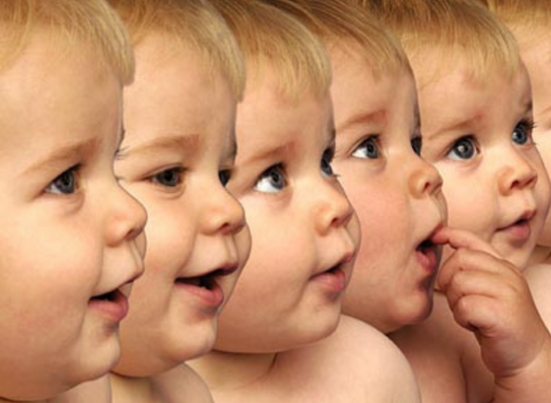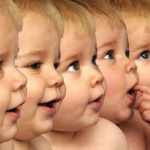
Scientists “break technical barrier” that’s preventing the cloning of primates, including humans
Wednesday, August 29, 2018 by David Williams
http://www.realsciencenews.com/2018-08-29-scientists-break-technical-barrier-thats-preventing-the-cloning-of-primates.html

Cloning has been – and probably always will be – one of the most important scientific discoveries made by humans. It has been a major fascination for at least half a dozen generations now, even if it may never be used directly on people because of the social, political, moral, and ethical concerns surrounding it. In the mid-1990s, “Dolly” the sheep became the first cloned mammal in existence. Now, more than 20 years later, a group of Chinese researchers has used the same method that birthed it to produce two genetically-identical long-tailed macaques which they have named Zhong Zhong and Hua Hua – owing to the term “Zhonghua” which actually means the Chinese people.
According to a report on the new cloning research paper, the monkeys that resulted from the latest experiments by the Chinese researchers are the world’s first primates to be cloned with the use of a technique known as somatic cell nuclear transfer, or SCNT. It’s the same technique that experts in Scotland used to clone Dolly all those years ago. Now, with a little tweaking, the researchers say that they have “broken a technical barrier” that previously prevented primates – including humans – from being cloned.
Qiang Sun, the lead researcher who worked on the project with colleagues at the Chinese Academy of Sciences, said that the success of their work could open the door to many different possibilities, especially regarding humans and cloning. “The technical barrier of cloning primate species, including humans, is now broken,” he explained. “In principle, it can be applied to humans. However, the reason we broke this barrier is to produce animal models that are useful for medicine and human health. There was no intention to apply this method to humans.”
It has been known for quite some time now that SCNT is actually a fairly effective method of cloning animals, based mainly on the fact that there were a string of successful cloning experiments using that method. Of the known successes, there were 23 different species of animals cloned, including cats, cows, horses, and even pigs. Because of these successful cloning experiments, there was a belief that perhaps the first human clones were right around the corner.
However, then-U.S. President Bill Clinton put a stop to anything that might have been on the pipeline by issuing a ban on the use of federal funds for human cloning research. But that was 19 years ago, and there’s a chance now to look at current standards and practices to see if anything needs to be changed at all. Could it be possible for human cloning research to continue now so that researchers can figure out what method works best in order to clone actual humans?
Although cloning has been something of a major fascination in the eyes of the general public, there are a lot of different issues when it comes to cloning actual humans. For one thing, there are questions about the morality of cloning an actual person. As in, what can be done about the fact that the human “soul” isn’t part of the cloning process? How can it be determined to what extent a clone is identical with another person? If two clones are born from the same individual, which one of them is the “real” one?
It should also be noted that, despite the number of reported successful attempts at cloning, there have been far more failures. As the European Parliament’s top environmental committee member, Renate Sommer, once said about Chinese cloning, the techniques being used are not yet “fully mature.”
“The mortality rate remains equally high,” said Sommer. “Many of the animals which are born alive die in the first few weeks, and they die painfully.” That certainly doesn’t sound like something that any human – cloned or otherwise – deserves to be subjected to.
Find out more groundbreaking scientific research at Inventions.news.
Sources include:
Tagged Under: Tags: animal experiments, cell division, clones, Cloning, Dolly The Sheep, Ethics of cloning, human cells, human cloning, macaques, primates





